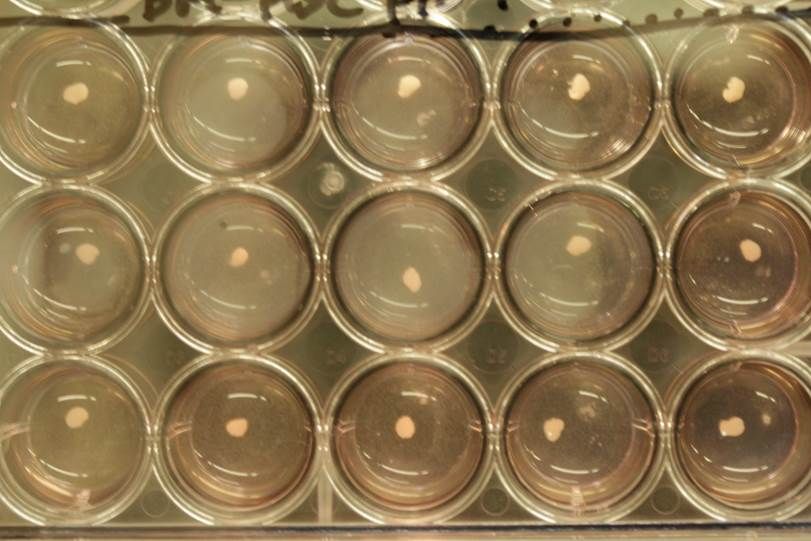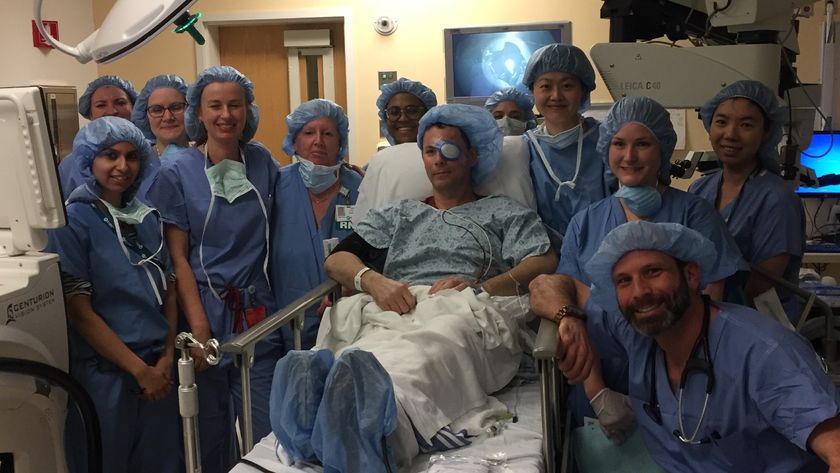Tiny Human Liver Built from a Cocktail of Cells

Tiny human livers grown from stem cells get to work when they are transplanted into mice, cranking out proteins and breaking down drugs that mice normally can't, say scientists in Japan who created the working organs.
The human "liver buds" grew blood vessels and produced proteins such as albumin that are specific to humans.
The researchers further confirmed the livers were working by showing that transplanting a liver into a mouse whose liver was lethally damaged allowed the animal to live longer then expected.
"It's a human liver, functioning in a mouse," said study researcher Takanori Takebe, a stem-cell biologist at Yokohama City University in Japan. He and his colleagues detailed their work in an article published today (July 3) in the journal Nature.
In humans, liver buds form during embryonic development, and are the precursors to the fully formed organ. In their experiments, the researchers grew the buds in dishes, from a cocktail of three cell types including stem cells that were programmed to become liver cells.
“We basically mimicked the early processes of liver bud forming,” Takebe said. [5 Crazy Technologies That Are Revolutionizing Biotech]
It took two days for the cells in the dish to self-organize into a three-dimensional liver bud. The key reason for the success of this technique was using stem cells together with cells from the umbilical cord and bone marrow, the researchers said. Such cells are involved in the formation of an organ during development.
Sign up for the Live Science daily newsletter now
Get the world’s most fascinating discoveries delivered straight to your inbox.
Putting stem cells together with other cell types has been tried before, the researchers said. However, in previous efforts, the cell mixture was put onto scaffolds that formed the shape of an organ, and the experiments didn't work because the cells failed to attach to the scaffold properly.
Takebe said he was surprised when he saw the liver buds growing in some of the plates. He showed the results to his colleagues, and some of them thought there was some kind of contamination in the petri dish, he said.
This is the first time stem cells have been combined with other elements in a way that lets them move about freely and grow into a three-dimensional structure, the researchers said.
There are a number of challenges to face before such liver buds could be transplanted in humans. The most important next step, Takebe said, is to make a large number of liver buds in vitro, perhaps tens of thousands. “We have to develop an automated culture system able to mass produce liver buds. This takes five to six years,” he said.
Currently, there’s a shortage of donor livers for treating end-stage liver failure. While about 6,000 liver transplants are done every year in the United States, there are more than 16,000 Americans on the waiting list for a liver transplant, according to the American Liver Foundation. [9 Most Interesting Transplants]
Takebe said it's possible the technique could one day be used with other organs that have a similar course of development, and require complex vascularization, such as the pancreas, lungs and kidneys.
“Now we are trying to apply a self-organizing approach into the pancreas formation, and so far got good results,” he said.
If the liver buds were to one day be tried in humans, it's likely the first patients would be newborns or children with liver damage who otherwise would die without a treatment, the researchers said.
Once in the body, the buds could grow and serve as a permanent replacement, or a temporary graft while a patient's damaged liver recovers.
Email Bahar Gholipour. Follow LiveScience @livescience, Facebook & Google+. Original article on LiveScience.com.












